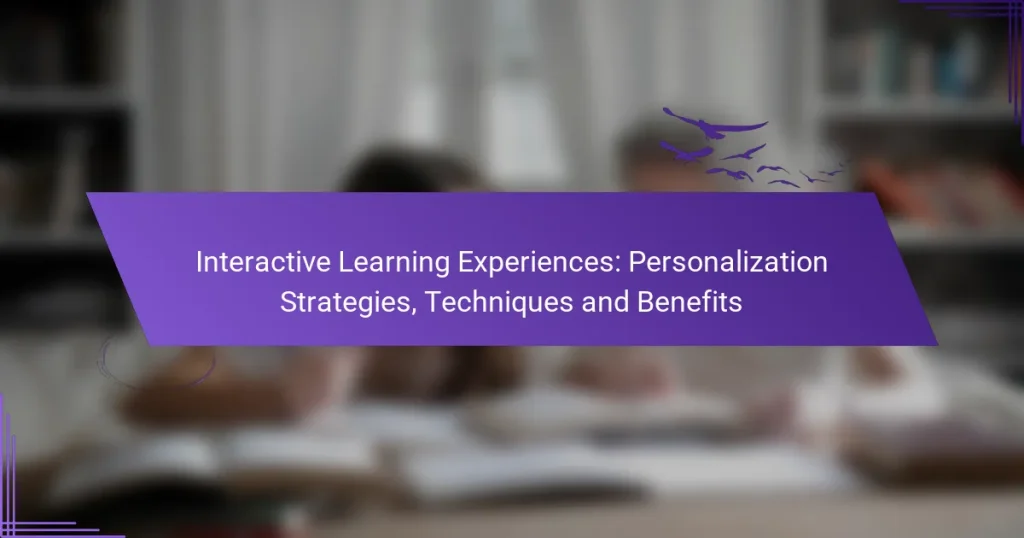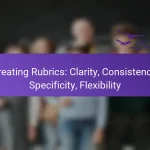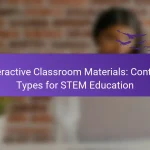Interactive learning experiences can be significantly enhanced through personalization strategies that cater to individual learner needs. By employing techniques such as data-driven analytics and AI-powered content recommendations, educators can create tailored educational experiences that foster deeper engagement and improve information retention.

How can personalization enhance interactive learning experiences?
Personalization enhances interactive learning experiences by tailoring content and approaches to meet individual learner needs. This strategy fosters deeper engagement, improves satisfaction, and can lead to better retention of information.
Increased engagement through tailored content
Tailored content captures learners’ interests by aligning with their preferences and learning styles. For instance, using multimedia resources like videos or interactive quizzes can keep learners more involved compared to traditional text-based materials.
By analyzing learner data, educators can identify topics that resonate most with individuals, allowing for a more engaging experience. This can include adjusting difficulty levels or providing options for different types of content delivery.
Improved learner satisfaction and retention
When learners receive personalized experiences, their satisfaction levels typically increase, leading to higher retention rates. Studies suggest that personalized learning can boost retention by significant margins, as learners feel more connected to the material.
Offering choices in how to engage with content—such as selecting projects or assessments—can further enhance satisfaction. This autonomy encourages learners to take ownership of their educational journey, which is crucial for long-term retention.
Adaptive learning paths for individual needs
Adaptive learning paths allow for a customized educational journey that adjusts based on a learner’s progress and performance. This approach ensures that learners are neither bored with material that is too easy nor overwhelmed by content that is too challenging.
For example, an adaptive learning system might provide additional resources or alternative explanations if a learner struggles with a concept. This flexibility can significantly improve learning outcomes by addressing individual needs in real-time.
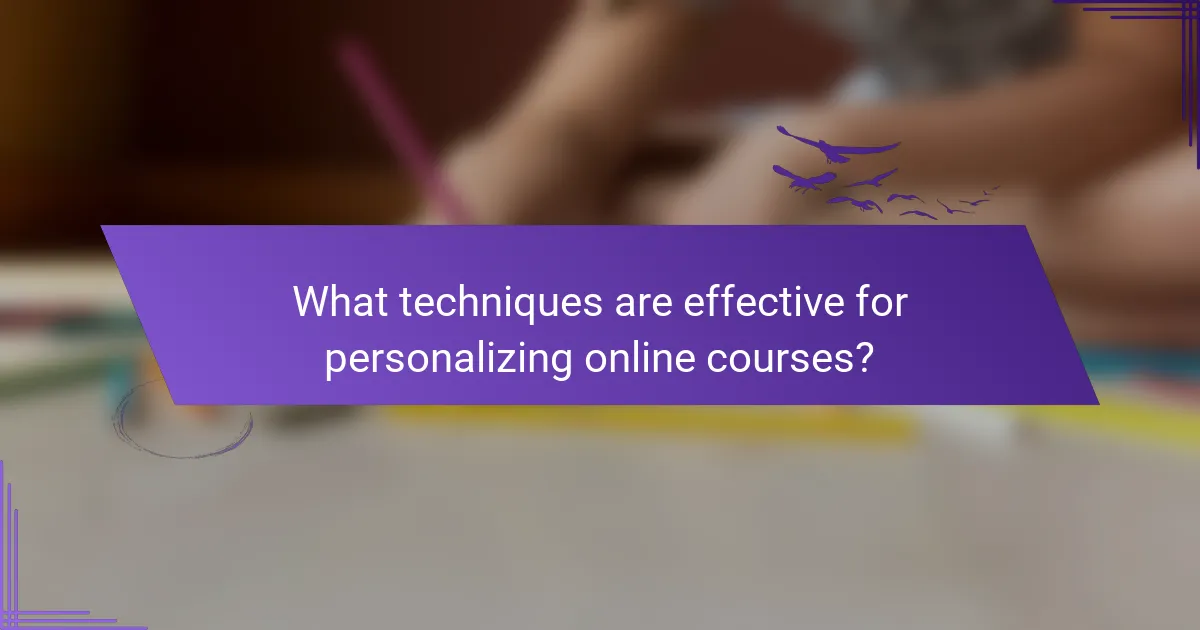
What techniques are effective for personalizing online courses?
Effective techniques for personalizing online courses include leveraging data-driven learner analytics, utilizing AI-powered content recommendations, and implementing interactive assessments for real-time feedback. These strategies enhance the learning experience by tailoring content and assessments to individual learner needs and preferences.
Data-driven learner analytics
Data-driven learner analytics involves collecting and analyzing data on student interactions and performance to inform personalized learning paths. This can include tracking engagement metrics, completion rates, and assessment scores to identify strengths and weaknesses.
By using this data, educators can create customized learning experiences that address specific learner needs. For example, if a student struggles with a particular topic, additional resources or targeted exercises can be provided to help them improve.
AI-powered content recommendations
AI-powered content recommendations use algorithms to suggest relevant learning materials based on a learner’s behavior and preferences. These systems analyze past interactions to predict what content will be most beneficial for the individual.
For instance, if a student frequently engages with video content, the platform may recommend similar videos or related courses. This approach not only enhances engagement but also helps learners discover resources they might not have found otherwise.
Interactive assessments for real-time feedback
Interactive assessments provide immediate feedback to learners, allowing them to understand their progress and areas needing improvement. These assessments can take various forms, such as quizzes, polls, or simulations that adapt based on learner responses.
For example, a quiz that adjusts its difficulty based on the learner’s previous answers can help maintain an appropriate challenge level. This real-time feedback loop encourages continuous learning and helps students stay motivated by clearly showing their progress.
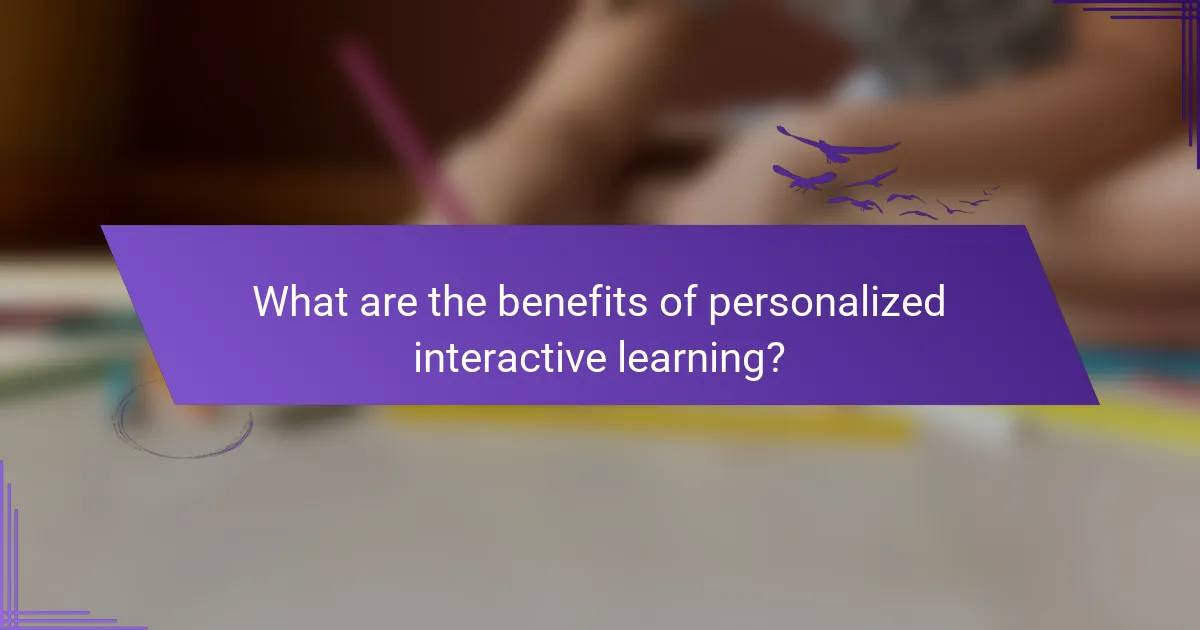
What are the benefits of personalized interactive learning?
Personalized interactive learning offers several advantages, including improved engagement and tailored educational experiences that meet individual learner needs. By adapting content and delivery methods, it enhances the overall effectiveness of the learning process.
Higher completion rates in online courses
Personalized interactive learning significantly boosts completion rates in online courses. When learners receive content tailored to their interests and skill levels, they are more likely to stay engaged and finish the course. Studies indicate that personalized approaches can lead to completion rates that are tens of percent higher than traditional methods.
To maximize completion rates, educators should implement adaptive learning technologies that analyze learner performance and adjust the course material accordingly. This ensures that students are neither bored by content that is too easy nor overwhelmed by material that is too difficult.
Enhanced critical thinking skills
Interactive learning experiences that are personalized can foster enhanced critical thinking skills. By presenting learners with scenarios that require them to apply knowledge in real-world contexts, they develop analytical skills and problem-solving abilities. This approach encourages learners to think deeply and critically about the subject matter.
Incorporating case studies or simulations that reflect real-life challenges can be effective. For instance, a business course might use personalized simulations that require learners to make strategic decisions based on market data, thereby sharpening their critical thinking skills.
Greater learner autonomy and motivation
Personalized interactive learning promotes greater learner autonomy and motivation. When learners have the ability to choose their learning paths and set their own goals, they feel more in control of their education. This sense of ownership can lead to increased motivation and a deeper commitment to learning.
To encourage autonomy, educators can provide options for project topics or allow learners to select from various resources. Additionally, incorporating gamification elements, such as earning badges for completing tasks, can further enhance motivation and engagement.
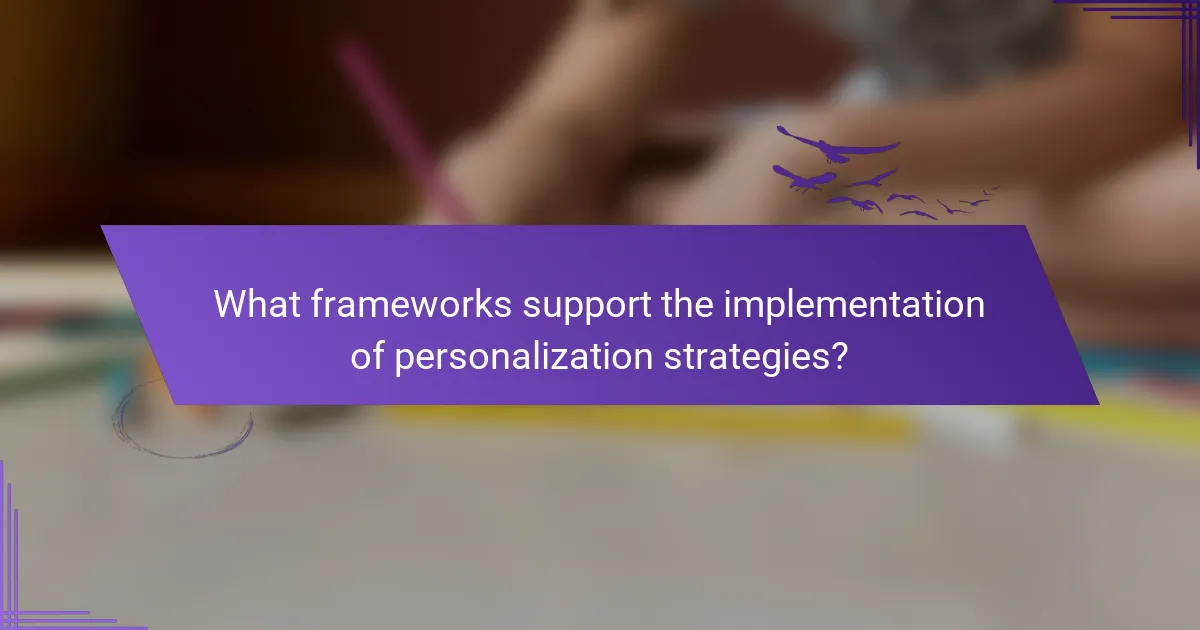
What frameworks support the implementation of personalization strategies?
Personalization strategies in interactive learning experiences are supported by various frameworks that enhance user engagement and learning outcomes. Key frameworks include Learning Management Systems (LMS) and content curation tools, which facilitate tailored educational content and adaptive learning paths.
Learning Management System (LMS) capabilities
Learning Management Systems (LMS) are essential for implementing personalization strategies as they provide the infrastructure to track learner progress and preferences. Features such as adaptive learning paths, user analytics, and customizable course content allow educators to tailor experiences based on individual needs.
When selecting an LMS, consider its ability to integrate with other tools and its support for mobile learning. Popular LMS platforms like Moodle, Canvas, and Blackboard offer varying degrees of personalization capabilities, so evaluate them based on your specific educational goals.
Content curation and management tools
Content curation and management tools play a critical role in personalizing learning by allowing educators to select and organize resources that align with learners’ interests and skill levels. Tools such as Edmodo and Google Classroom enable instructors to share curated content effectively, enhancing the relevance of learning materials.
To maximize the effectiveness of these tools, regularly update the curated content and solicit feedback from learners to ensure it meets their evolving needs. Additionally, consider using analytics features to assess which resources are most effective in engaging students and improving their learning outcomes.

How do different demographics influence personalization in learning?
Different demographics, including age, culture, and socioeconomic status, significantly impact how personalization in learning is implemented. Understanding these influences allows educators and developers to create more effective and engaging learning experiences tailored to diverse learner needs.
Tailoring for age-specific learning styles
Age plays a crucial role in shaping learning preferences and styles. Younger learners often benefit from interactive and gamified content, while older students may prefer more structured and analytical approaches. For instance, children might engage more with visual aids and storytelling, whereas adults may favor case studies and real-world applications.
When designing personalized learning experiences, consider the cognitive development stages associated with different age groups. For example, using simple language and vivid imagery for younger audiences can enhance comprehension, while providing opportunities for critical thinking and problem-solving is essential for older learners.
Adapting content for cultural relevance
Cultural background influences how learners relate to content and context. Personalizing learning experiences to reflect cultural norms, values, and examples can enhance engagement and comprehension. For instance, incorporating local history or familiar scenarios can make lessons more relatable and meaningful.
To effectively adapt content for cultural relevance, conduct research on the target demographic’s cultural context. This may involve using familiar references, avoiding culturally specific jargon, and ensuring that examples resonate with the learners’ experiences. Additionally, consider offering multilingual support to cater to diverse language speakers within the same demographic.

What role does technology play in interactive learning personalization?
Technology is essential in personalizing interactive learning experiences by enabling tailored content delivery, adaptive learning paths, and real-time feedback. It allows educators and learners to customize their interactions based on individual needs, preferences, and performance, enhancing engagement and effectiveness.
Utilization of virtual reality in training
Virtual reality (VR) immerses learners in realistic environments, making training more engaging and effective. By simulating real-world scenarios, VR allows users to practice skills in a safe space, which is particularly beneficial in fields like healthcare, aviation, and engineering.
When implementing VR, consider the hardware and software requirements, as well as the learning objectives. Ensure that the VR content is aligned with the skills being taught, and provide adequate support for users to navigate the technology comfortably.
Gamification elements for engagement
Gamification incorporates game-like features into learning experiences to boost motivation and engagement. Elements such as points, badges, leaderboards, and challenges can encourage learners to participate actively and persist in their studies.
To effectively use gamification, define clear goals and rewards that resonate with learners. Avoid overwhelming users with excessive complexity; instead, focus on simple mechanics that enhance the learning experience. Regularly assess the impact of gamification on learner engagement and adjust strategies accordingly.

How can educators assess the effectiveness of personalization strategies?
Educators can assess the effectiveness of personalization strategies by analyzing learner progress and collecting feedback. These methods provide insights into how well personalized approaches meet individual student needs and enhance learning outcomes.
Tracking learner progress and outcomes
Tracking learner progress involves monitoring various metrics such as grades, completion rates, and engagement levels. Educators can use learning management systems (LMS) to gather data on how students interact with personalized content and identify trends over time.
For effective tracking, set specific goals for each learner and use benchmarks to measure progress. For example, if a student is expected to improve their math skills, compare their performance before and after implementing personalized strategies. Regular assessments can help in adjusting these strategies as needed.
Gathering feedback through surveys and interviews
Gathering feedback is crucial for understanding the impact of personalization strategies. Surveys and interviews can provide qualitative insights into student experiences and preferences. Educators should design questions that focus on the effectiveness of personalized learning elements, such as content relevance and engagement.
Consider using a mix of quantitative and qualitative questions to capture a comprehensive view. For instance, ask students to rate their satisfaction on a scale of 1 to 5 and follow up with open-ended questions about their learning experiences. This approach helps in identifying strengths and areas for improvement in personalization efforts.
